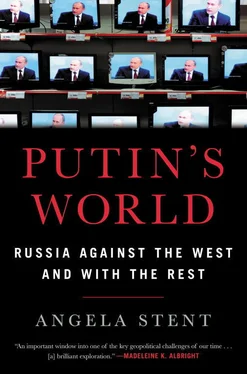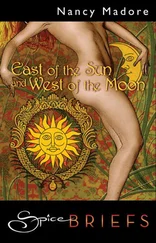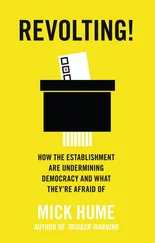Putin justified Russia’s entry into the Syrian Civil War as part of an effort to reduce terrorism by shoring up the Assad regime: “The collapse of Syria’s official authorities will only mobilize terrorists. Right now, instead of undermining them, we must revive them, strengthening state institutions in the conflict zone.” 25He presented Russia as a supporter of governments in power, upholding the status quo, as opposed to the United States, which had supported regime change during the Arab Spring. But Putin also admitted there were reasons closer to home for the intervention: “There are thousands of militants originating from the former Soviet republics and from Russia who are fighting there. And they can get back to Russia. And we should prevent that from happening.” 26Putin has said that at least 4,000 Russians—including Chechens—and Central Asians who live in Russia have joined terrorist groups in Syria. More Russians are fighting with terrorist groups in Iraq and Syria than citizens from any other country. 27
The United States, which believed the civil war would end only when Assad was no longer in power, opposed Russia’s intervention, as did its allies. Europe was already challenged by an unprecedented refugee crisis, with millions of people seeking asylum there. Russia’s intervention exacerbated the situation. It also necessitated coordination with the United States to “deconflict” air and ground operations, so that US and Russian planes and troops would avoid direct confrontation with each other. Russia’s definition of who was a terrorist differed from that of the US-led coalition. Moscow defined all opponents of Assad as terrorists, including those groups supported by the US. It often appeared that the Kremlin—despite what it said—was less interested in targeting IS than in killing members of secular opposition groups fighting for Assad’s ouster. During 2016, Secretary of State Kerry held regular meetings with Sergei Lavrov to try to resolve the conflict and bring the different sides together, but to no avail. While the US reiterated that Assad “had to go,” it did not do what would have been necessary to ensure his ouster. 28Russia, by contrast, said that Assad must remain in power, and did everything it could to secure this outcome.
By the time the Trump administration came in, the United States had accepted that Assad would remain in power, and it focused on maintaining what is known as the “deconfliction channel,” an ongoing communication between the two militaries. Every day, a US Air Force officer in Qatar calls a Russian officer at an air base in Latakia to head off, or “deconflict,” potential problems in Syria’s air space. In April 2017, the US ordered air strikes on Syria in response to Assad’s chemical weapons attack, which killed eighty people. 29Putin called the strikes “aggression against a sovereign state in violation of international law, and under a false pretext.” 30In 2018, responding to another chemical weapons attack, the US, the UK, and France carried out targeted air strikes against Syrian weapons facilities—after coordinating with Russia to ensure there were no Russian casualties.
By 2018, the Russian foray into Syria had paid off. Assad appeared to be firmly in power, the US no longer called for his ouster, and President Trump signaled that the US would begin withdrawing from Syria. Russia had become the go-to country for anyone seeking an end to the war. Putin summoned Assad to Sochi in November 2017 and gave him a bear hug, announcing that the war was ending and Russia would sponsor peace talks to initiate a political process of reform and reconciliation. “We still have a long way to go before we achieve a complete victory over terrorists,” Putin told Assad. “But as far as our joint work in fighting terrorism on the territory of Syria is concerned, this military operation is indeed wrapping up.” 31The next day the leaders of Iran and Turkey traveled to meet Putin to participate in these talks. Considering that Erdogan had bitterly opposed Assad and Turkey was home to two million refugees from Syria, this represented a notable turnaround and success for Putin. He called Trump, Netanyahu, the Saudi king, the Egyptian president, and other leaders to discuss his peace plans with them.
Russia had initiated a series of meetings to discuss peace in Astana to which the United States sent a low-level representative. There are now three parallel tracks seeking to resolve the Syrian conflict: the multilateral Geneva talks brokered by the United Nations; the Sochi talks led by Russia, with Turkish and Iranian participation; and the Astana talks in Kazakhstan hosted by President Nursultan Nazarbayev. Moscow is effectively the only link among the three sets of actors involved in the Syria crisis and sees them as complementary to each other, although the Astana process has become more important to Moscow than the Geneva process. The US is present only in Geneva.
So Putin not only has succeeded in keeping Assad in power and expanding and modernizing Russia’s once fading naval base at Tartus and air base at Hmeimim. He has forced the United States and Europe—and the countries of the Middle East—to recognize Russia’s importance as a regional player. For the time being, Assad will remain in power and Russia will have a say in ensuring that his successor remains friendly to Moscow.
Meanwhile, the situation in Syria remains precarious. An incident in February 2018 highlighted the danger of having so many parties with different agendas fighting at close quarters. Russian mercenaries working for the private contract group Wagner, owned by an oligarch close to Putin, tried to seize an oil field at Deir el-Zour in eastern Syria near a military base under the control of US-backed rebels and their US military advisers. A four-hour firefight ensued, and the American-backed troops killed “a couple of hundred” Russians. 32Both the Kremlin and the US Department of Defense played down the incident, but it showed clearly how quickly an unanticipated accident could escalate with unforeseen consequences. Indeed, Russia’s use of private military contractors goes back to Tsar Ivan the Terrible. The current activities of Wagner—both in Syria and Ukraine—and the Kremlin’s habit of denying they have anything to do with the official Russian military, have raised the stakes in the Syrian conflict. 33
At the July 2018 Helsinki summit between presidents Putin and Trump, there was apparently agreement to work together on Syria. 34As the civil war winds down, Putin’s goal is to secure a stable and friendly internationally recognized regime that will guarantee Russia’s permanent military presence there and enable Russia to project naval and air power into the Mediterranean. Russia will seek Western assistance in reconstructing postwar Syria. By intervening to keep Assad in power, Putin has reestablished Russia as a major power in the Middle East and achieved one of his major goals: ensuring Russia has a seat at the table on all major international decisions.
TURKEY
Russia’s commitment to the Assad regime has complicated its relations with other countries in the region, most notably with Syria’s neighbor Turkey. Russia and Turkey have shared a long and turbulent history. The tsarist and Ottoman empires were often at war with each other between the sixteenth and twentieth centuries. Several of the Russo-Turkish wars led to Russia acquiring territory from the Ottomans and gaining access to the Black Sea. After the collapse of the two empires, Kemal Ataturk’s Republic of Turkey and the new Bolshevik state began to work together. However Turkey’s accession to NATO in 1952 placed the USSR and Turkey on opposite sides during the Cold War. After the Soviet collapse, Russia grew concerned that Turkey would become a competitor in the post-Soviet space, appealing to the Turkic-speaking countries in Central Asia and promoting the teaching of Islam. But Turkey never succeeded in exercising the influence in Russia’s neighborhood that Moscow initially feared it might. Economic ties began to flourish. Russia became Turkey’s most important trading partner, and Turkey became the second largest market for Russia’s energy resources. Turkey also emerged as the leading destination for Russian tourists and shuttle traders, and private business investments across both countries expanded. And as the long drawn-out membership negotiations between Turkey and the European Union stalled and Brussels’s doubts about Ankara’s suitability for membership grew, Turkey increasingly turned to Russia.
Читать дальше












